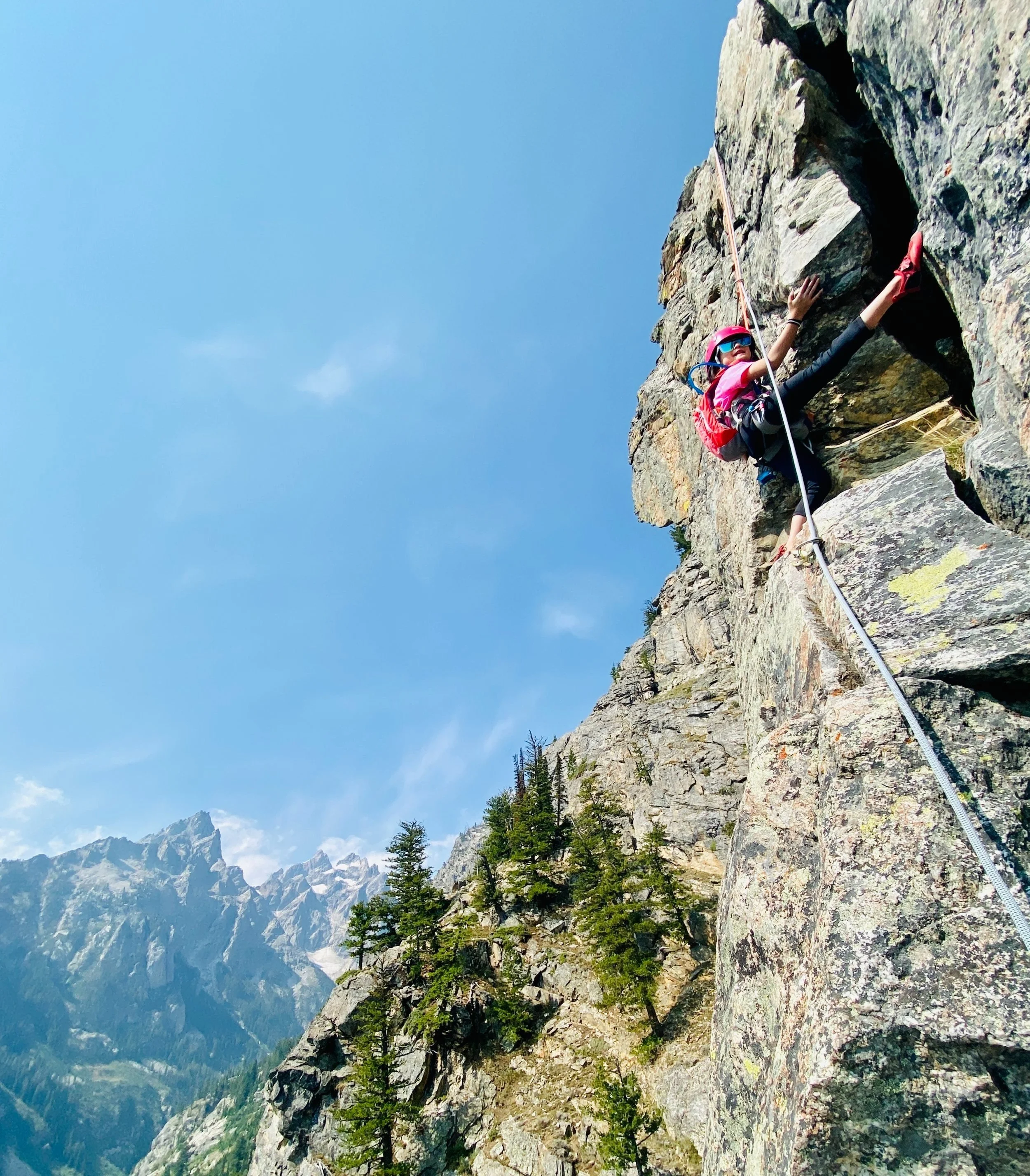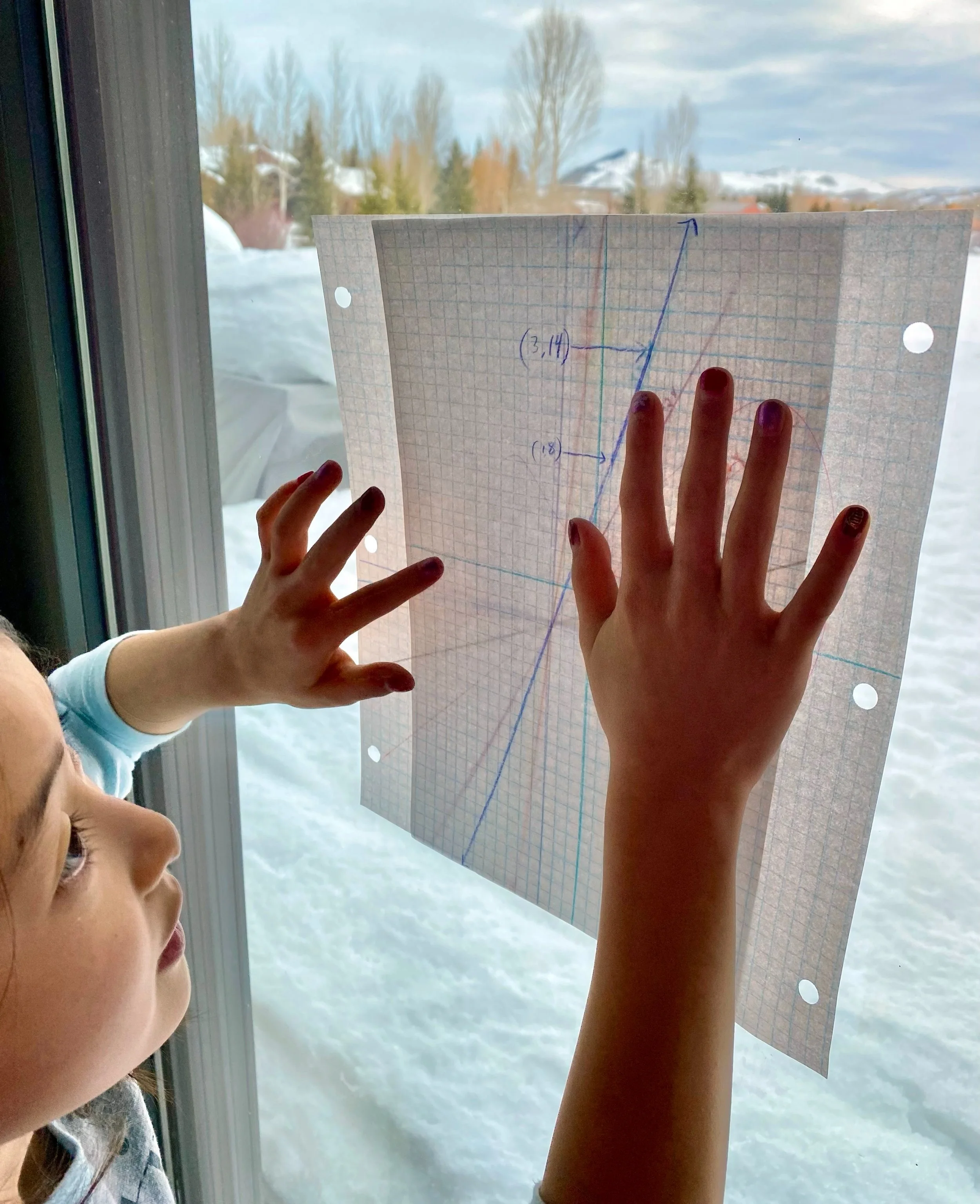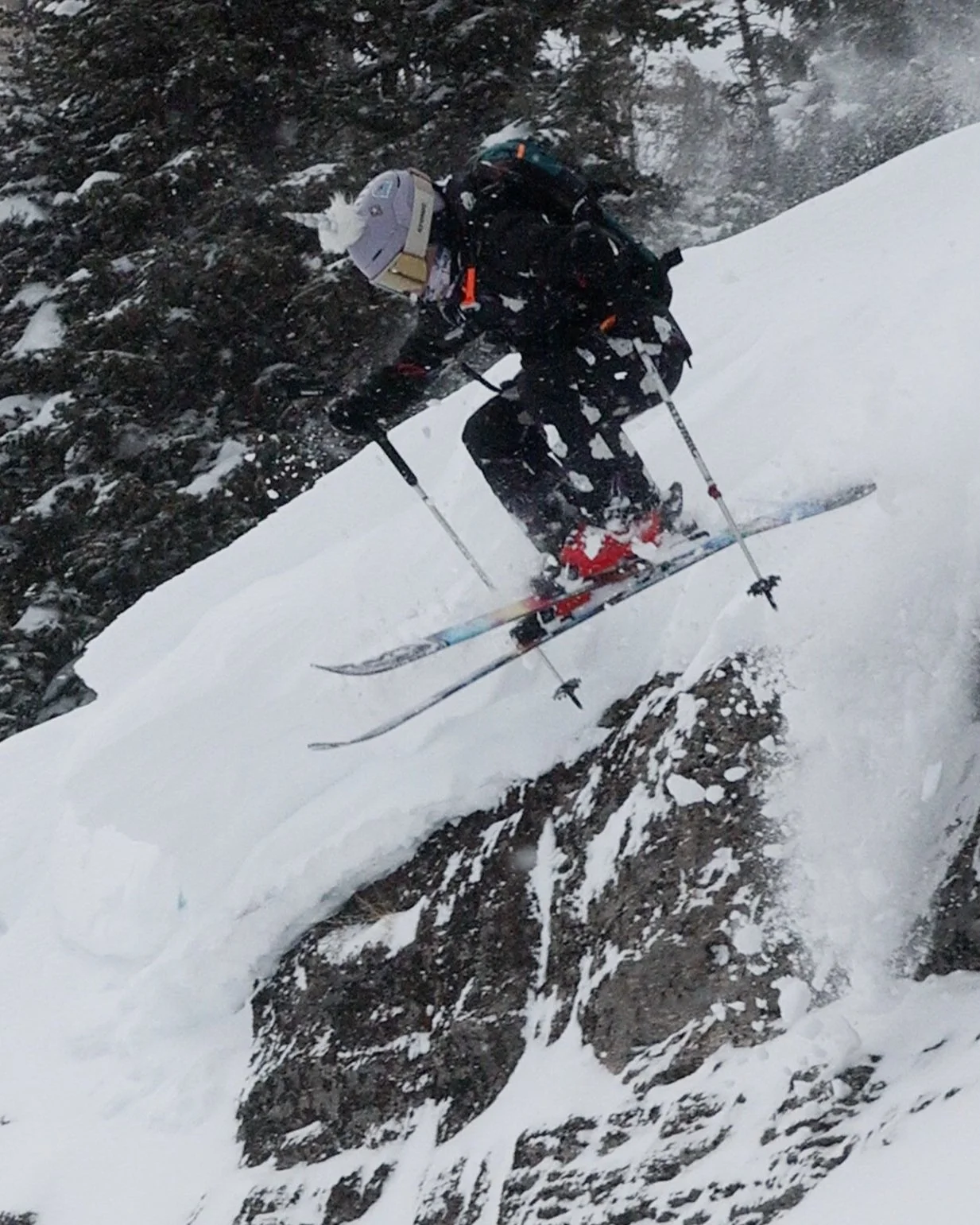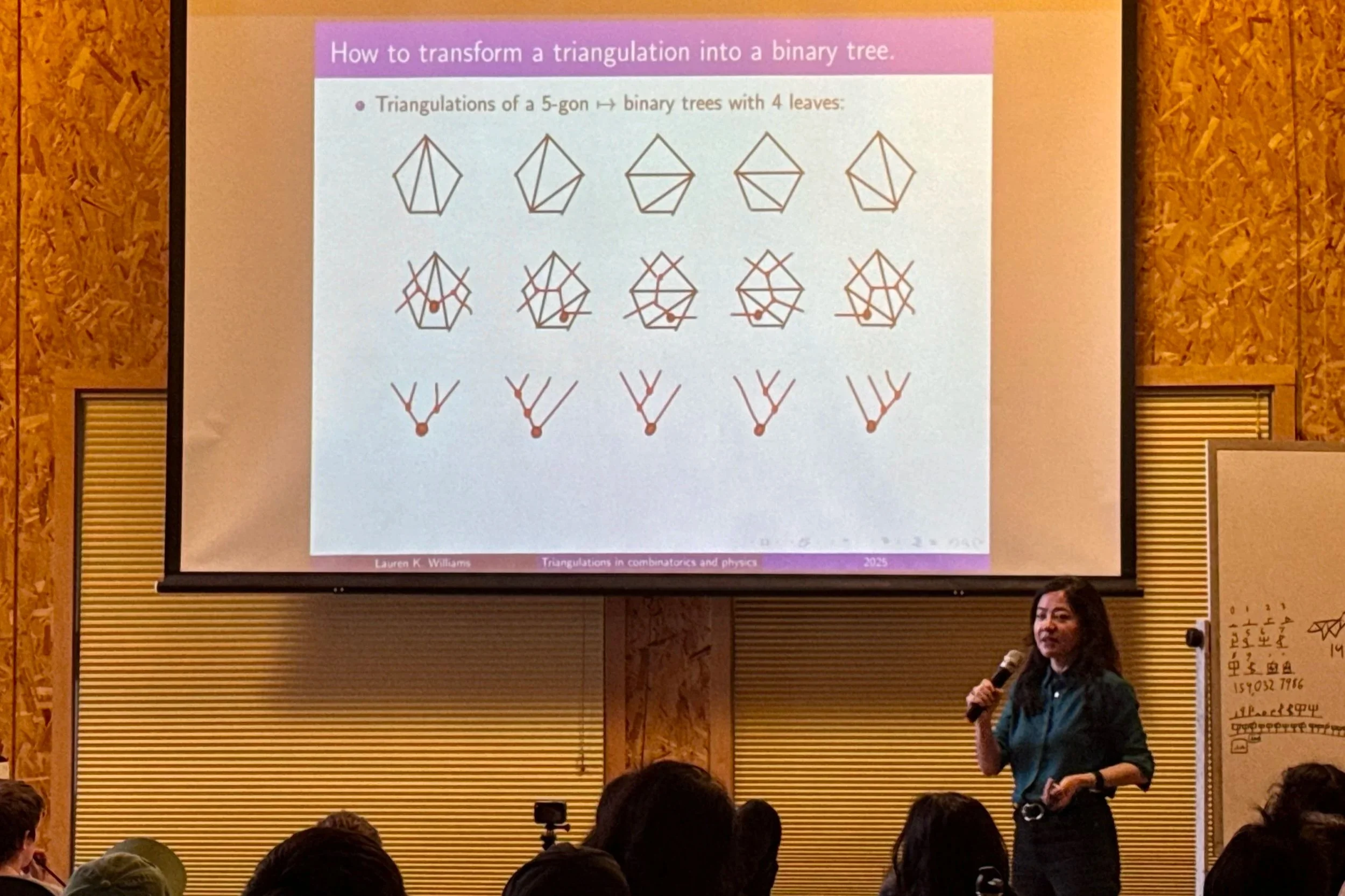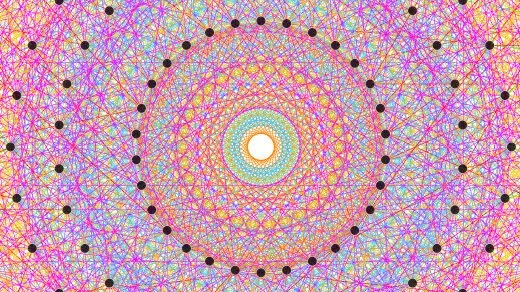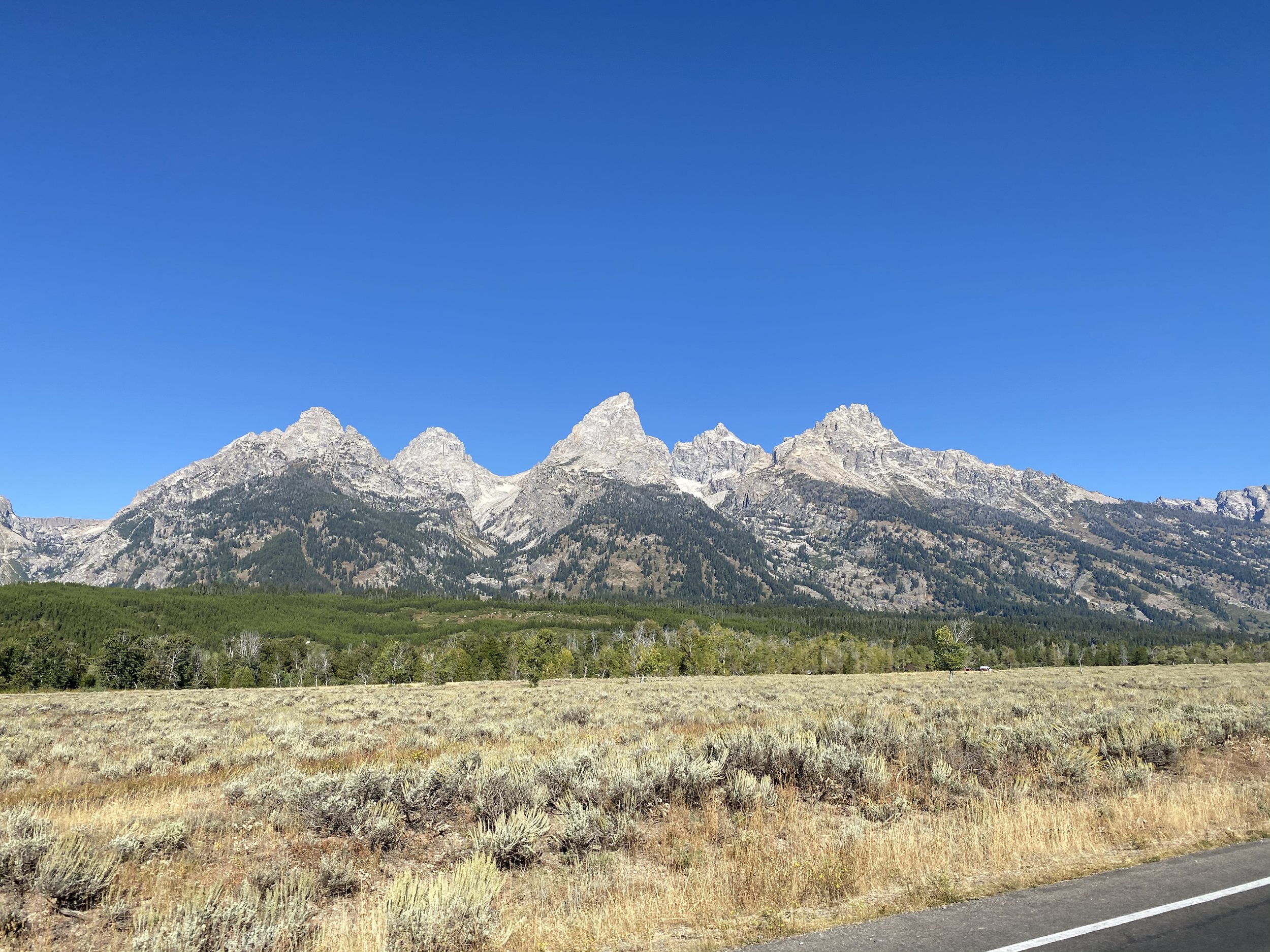
Stellar teachers. Passionate kids.
Exploring math in the Tetons.
Math with no limits
Founding student Aria Chung climbs the Tetons
Math in the Mountains is a program founded by Paul Zeitz & Andrew Chung that features a unique mix of teachers, kids, and parents with a deep passion for mathematics, based at the Teton Science Schools (TSS) in Jackson Hole. The goal of MitM is to mix mathematical recreations with outdoor adventures — from rock climbing to kayaking, from skiing to hiking — in a way that invites creativity, imaginative thinking, grit and resilience, and intellectual risk-taking. Our camps further explore the superpowers math-loving kids develop, so they learn “how” and “why” learning mathematics can be enriching and important to building a mindset as a problem solver and exponential thinker.
Summer Camp dates for 2026:
- Alpha (10- to 13-year olds): June 20-28
- Omega (12- to 14-year olds): June 20 to July 4
- Teacher Immersion Program: June 22-27
Winter Camp will return in 2027
Our first WinterCamp took place February 15-22, 2025 in partnership with Jackson Hole Mountain Resort during a deep powder cycle and featured world-class ski instruction coupled with topics like “calculus of skiing”, non-Euclidean geometry by Po-Shen Loh, and combinatorics of ski lifts.
MitM is led by a group of award-winning mathematicians and leading math educators who are among the most innovative thinkers in gifted mathematical education in the world for youth. Last year’s program brought together for the first time ever U.S. Math Olympiad legends and National Coaches who led the U.S. to its last 6 victories since 1994: Paul Zeitz, Po-Shen Loh, and John Berman. The distinguished faculty has also included notable mathematicians and scientists (Ken Ono, Ed Seidel); founders of gifted math camps and leading math circles (Mira Bernstein, Wendy Cho); math curriculum heads at the leading schools in the nation (Proof School, Nueva School, Helios School, Castilleja); and applied mathematicians with investing and entrepreneurial backgrounds (Andrew Chung).
Po-Shen Loh teaching probability games with Math in the Mountains: 10,450’ above sea level!
The number of campers is deliberately very small and gender-balanced, ensuring an unusually high instructor-to-camper ratio and significant attention to each child and parent’s needs. Instruction takes place from the classrooms at TSS to outdoor locations in nearby Grand Teton National Park and Jackson Hole Mountain Resort to create a unique and kind environment for mathematical discourse.
Creating community for campers and families is a key focus. After the camp ends, MitM offers AfterCamp activities during the school year to keep the broader family engaged. MitM has spawned a math publication (The Real Deal), math competitions (Math in the Matrix), study groups from coast-to-coast, a girl’s book group, and numerous friendships that could last campers for life.
Dropping cliffs in Jackson Hole back country
Who should attend?
Math in the Mountains’ intensive, individualized program is targeted at highly-gifted “math kids” ages 10 to 14. Summer Camp 2025 welcomed 60 students from around the world and their families to Jackson Hole, and we expect 2026 will be of a similar scale. Our Alpha camp is a one-week long program that is filled with exciting classes, one-on-one tutorials, plenary lectures, group activities, and there will be opportunities for kids, parents and teachers to interact with each other. Our Omega camp for experienced campers will be a residential program of 2 to 3 weeks in length that will involve students attending more advanced classes, participate in customized Oxford-style tutorials, and working on a research project to be presented at the end of camp.
A new MitM camper should know some algebra and geometry and understand the notion of a mathematical argument. By far, the most important things are curiosity and stamina: the prospect of doing many hours of math each day must be appealing! No prior experience is necessary for the outdoor excursions, but students should be excited to try new adventures in the Jackson Hole wilderness!
The faculty also runs, in parallel to the Summer Camp, a week-long program for math teachers at all levels. In 2025, a group of 40 elementary, middle and high school teachers participated in an intensive residential math circle “immersion program,” learning many non-standard topics that will stretch their problem-solving abilities. We expect the 2026 program to be of a similar scale.
To join our mailing list or inquire about future openings, please complete this form, and our admissions team will contact you. New applicants to MitM will be asked to share math experiences and explorations, complete a questionnaire, and provide references. After our review, we may send you some fun math challenges to work on and possibly schedule a video interview to get to know you better.
Math legend Ken Ono teaches about jellyfish math, partition theory, and winning Olympic medals with linear algebra
Harvard Professor & 2025 MacArthur Fellow Lauren Williams teaching triangulations and physics in nature
“Best Week Ever”
From summitting Rendezvous Peak to rational tangles, from whitewater rafting on the Snake River to the geometry of complex numbers, from bear sightings to the mathematics of fairness, see how much we packed into a week in 2025, 2024 and 2023 in these videos and slideshows below:
Learn More about:
Jackson Hole
The mountains and mathematical problem solving embody exploration, creativity, imaginative thinking, grit, resilience, and risk-taking. There is no place like Jackson Hole that is more emblematic of such values.
Topics
From computational number theory to the art of complex numbers, from mathematical games to knot theory, MitM will cover exciting math topics outside of the traditional school curriculum.
Instructors
Our instructors are mathematicians with deep experience in research, camps, circles, and competitions. We will also guide parent discussions on sharing best practices for raising gifted math kids.
“The average (non-problem-solver) math student is like someone who goes to a gym three times a week to do lots of repetitions with low weights on various exercise machines. In contrast, the problem solver goes on a long, hard backpacking trip. Both people get stronger. The problem solver gets hot, cold, wet, tired, and hungry. The problem solver gets lost, and has to find his or her way. The problem solver gets blisters. The problem solver climbs to the top of mountains, sees hitherto undreamed of vistas. The problem solver arrives at places of amazing beauty, and experiences ecstasy that is amplified by the effort expended to get there. When the problem solver returns home, he or she is energized by the adventure, and cannot stop gushing about the wonderful experience. Meanwhile, the gym rat has gotten steadily stronger, but has not had much fun, and has little to share with others.”
—Paul Zeitz, The Art & Craft of Problem Solving


